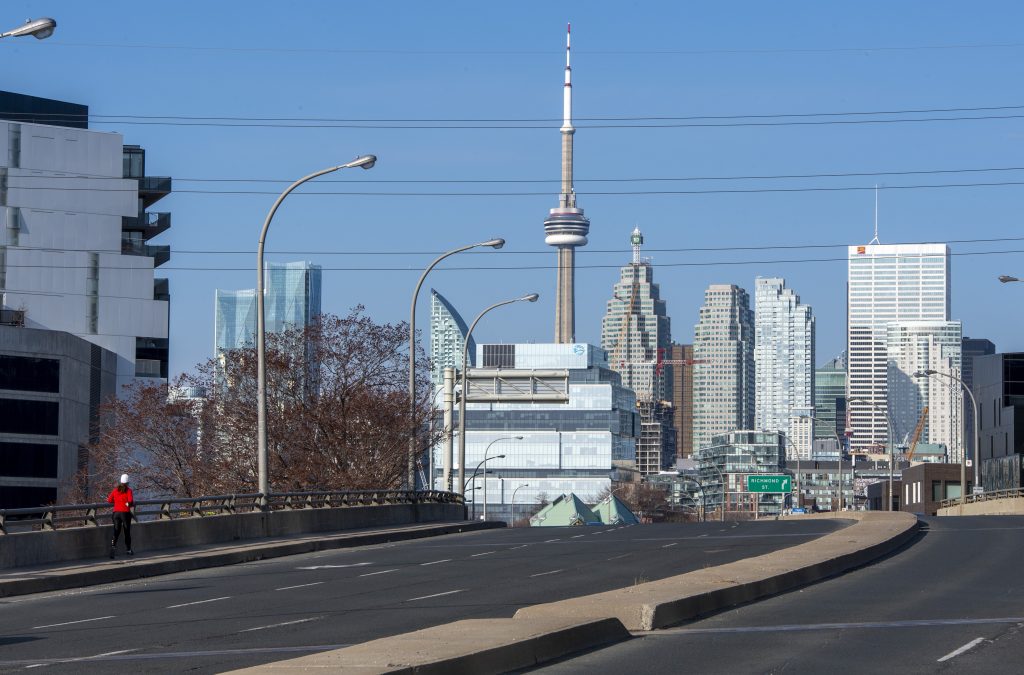Four days after applying the ’emergency brake’, Premier Doug Ford has issued a provincewide stay-at-home order as Ontario grapples with how to get surging COVID-19 cases under control.
WATCH: https://toronto.citynews.ca/2021/04/06/ontario-announcing-provincewide-stay-at-home-order-sources/
Under the emergency stay-at-home order, non-essential retail stores will be restricted to curbside pickup between the hours of 7 a.m. and 8 p.m., while big-box stores will be restricted to sales of groceries, household cleaning supplies and pharmacy items — the first time that such a restriction has been imposed on them since the pandemic began.
Shopping malls will be closed except for curbside pick-up and delivery, via appointment, with one single designated location inside the mall, and any number of designated locations outside the mall.
Grocery stores and pharmacies will remain open under current health measures and restrictions.
Outdoor garden centres and nurseries, along with indoor greenhouses that engage in sales to the public, will be allowed to remain open with a 25 per cent capacity limit and a restriction on hours of operation.
The order will take effect at 12:01 a.m. Thursday and remain in place for four weeks.
Ontario’s previous stay-at-home order went into effect on Jan. 14 and was lifted nearly two months later on March 8.
Premier Doug Ford said a surge in COVID-19 cases fuelled by more transmissible variants of concern and a sudden rise in intensive care unit admissions prompted the new restrictions.
“These variants have taken off,” Ford told a news conference. “This is moving rapidly, every single hour-by-hour, day-by-day, and a decision last week, doesn’t represent a decision today.”
“The reality is, despite everything we’ve done so far, the COVID-19 situation in Ontario is getting worse as these new variants continue to spread and hospitals are reaching capacity.”
Ford said that by the end of the four-week period of the stay-at-home order, about 40 per cent of Ontarians – or five million people – will have received the first dose of a COVID-19 vaccine. About 2.7 million people had received at least one dose as of Wednesday.
The stay-at-home order will not affect schools, which will remain open for the time being.
In addition, during the April break, education workers who provide direct daily support to students with special education needs across the province, and all education workers living or working in high-risk neighbourhoods in Toronto and Peel, will be eligible for vaccination.
Under the stay-at-home order, the following businesses will be allowed to remain open for in-person shopping by appointment only and with a 25 per cent capacity restriction during the hours of 7 a.m. to 8 p.m.:
- Safety supply stores;
- Businesses that primarily sell, rent or repair assistive devices, aids or supplies, mobility devices, aids or supplies or medical devices, aids or supplies;
- Rental and leasing services including automobile, commercial and light industrial machinery and equipment rental;
- Optical stores that sell prescription eyewear to the public;
- Businesses that sell motor vehicles, boats and other watercraft;
- Vehicle and equipment repair and essential maintenance and vehicle and equipment rental services;
- Retail stores operated by a telecommunications provider or service, which may only permit members of the public to enter the premises to purchase a cellphone or for repairs or technical support
The province says it will also be increasing health and safety inspections and enforcement at essential businesses in regional hot zones.
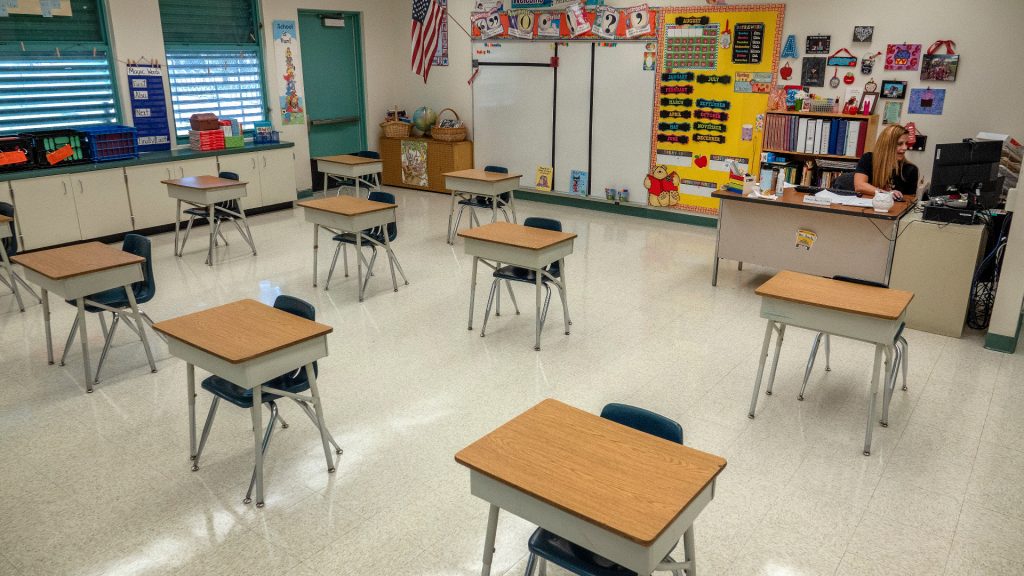
All Toronto schools will close on Wednesday, with students shifting to remote learning amid a troubling spike in COVID-19 outbreaks.
WATCH: https://toronto.citynews.ca/2021/04/06/all-toronto-schools-to-close-wednesday-amid-spike-in-covid-19-outbreaks/
Classes will remain closed until at least April 19.
The announcement comes a day after both the Toronto District School Board (TDSB) and Toronto Catholic District School Board (TCDSB) announced the closure of several schools due to outbreaks.
On Monday, Peel Public Health announced that schools in Mississauga, Brampton and Caledon would close for two weeks, starting Tuesday, April 6.
Peel’s medical officer of health, Dr. Lawrence Loh, exercised the power to close schools under Section 22 of the Ontario Health Protection and Promotion Act.
“This closure is a necessary step to protect staff and students in Peel Region,” Dr. Loh said in a release. “I know this will be challenging for parents to navigate and we appreciate all the sacrifices parents continue to make as we continue to fight COVID-19 in our community.”
Toronto and Peel remain two of the virus hotspots in Ontario. Provincial health officials reported 3,065 new cases of COVID-19 on Tuesday with the majority of the infections being in Toronto (955) and Peel Region (561).
TDSB and TCDSB make up more than 30 per cent of the active cases in Ontario schools. According to the Ontario government website, there are currently 2,028 COVID-19 cases reported in the last 14 days.
York Region has said they will not be closing schools at this time because “COVID-19 transmission in schools in York Region remains low.”
WATCH: https://toronto.citynews.ca/2021/04/06/all-toronto-schools-to-close-wednesday-amid-spike-in-covid-19-outbreaks/
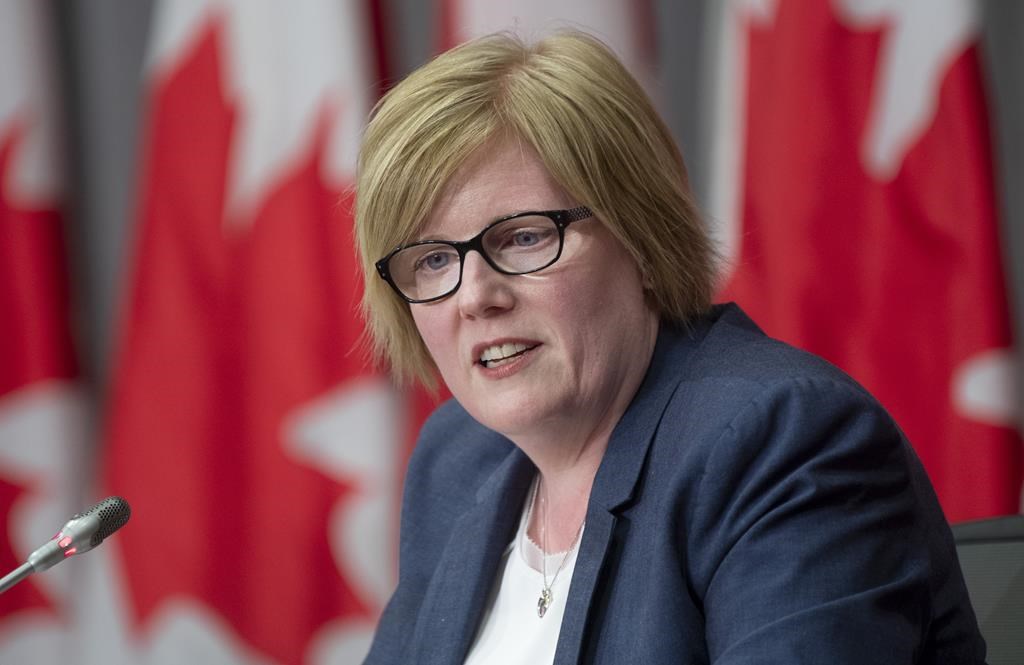
OTTAWA — When COVID-19 forced the closure of department stores, Mary Junne Boyco and her co-workers lost their jobs, ending more than a decade of working in the service sector.
The 35-year-old lost sleep as anxiety crept in about how to pay the bills and whether they would ever get back to work.
In the ensuing months, she went back to school to upgrade her skills. She started looking for work outside the service sector, which a year into the pandemic still has the longest way back to pre-crisis employment levels.
Boyco’s path out of the service sector is one that could be replicated through dozens of new skills training programs being unveiled through the federally backed Future Skills Centre to help workers mitigate some of the pandemic’s long-term impacts.
What COVID-19 has done is push the pedal down on shifts already underway in the economy, particularly as companies find ways to connect digitally with customers, and use technology to boost output while not adding to the bottom line.
The centre’s executive director, Pedro Barata, said the programs aim to rethink how to help workers most affected by the pandemic adapt to a shifting labour market.
Among the targeted workers for the training programs are visible minority women, Indigenous people, newcomers and youth.
“If we just stick with the current models … we’re going to leave a whole lot of people behind,” Barata said in an interview.
“That’s not good for people themselves, but it’s also not good for our economy and frankly our society.”
Barata said he expects the federal Liberal government’s April 19 budget to outline a plan for workers to upgrade their skills and keep changing alongside businesses.
As of February, the workforce was 599,100 jobs short of where it was in February of last year, or 3.1 per cent below pre-pandemic levels. Statistics Canada will provide job figures for March on Friday.
Labour and business leaders generally agree that skills training should be high on the agenda to help workers get back into the labour market, but too few have strategies to do that, Barata said.
Without a wider view of training, it may take longer for workers displaced by COVID-19 to find new jobs.
Boyco said she went back to school and did a professional certificate course in human resources, seeing it as possible career path with more security. She added that she believed upgrading her skills has made them more transferable in the workforce.
“I began seeking employment outside of the service sector, or something that could provide like a stable future career and protect me from the impact of the new outbreaks,” Boyco said. “From my point of view, that’s what I’ve been doing, and that’s what I did.”
The Toronto-based Future Skills Centre plans to fund 65 projects to the tune of $32.4 million to help workers affected by the pandemic upgrade or develop new skills. The organization is funded by the federal government’s Future Skills Program.
One of those programs is aimed at taking 120 women who are unemployed service workers in Ontario, like Boyco, and help them move to high-growth sectors like technology, finance, or health care by building new or reapplying existing skills.
The program, partially overseen by The Career Foundation, is also part of a broader discussion to see where growing industries are heading and what skills employers will need, said Evelyn Akselrod, the foundation’s vice-president of strategic development, community and corporate partnerships.
“We could get pillars, big pieces that we could then break down and look at the skill sets related to those changes,” she said.
“It’s about looking at the future and reading the trends.”
It’s also about helping people buy in to the idea of lifelong learning, she added.
The Liberals’ last budget, in 2019, outlined such a plan to give workers paid time off and a new benefit to save up for qualifying training programs.
The pandemic delayed the rollout of the benefit.
At a parliamentary committee last month, Employment Minister Carla Qualtrough said the government is taking a second look at the Canada Training Benefit and how it might have to change in light of the past 12 months.
“We’re right now working with stakeholders to understand the best way to support workers … including what the training benefit could do for broader number of Canadians,” Qualtrough said, noting it was aimed at those who had jobs and wanted time off to improve their skills.
This report by The Canadian Press was first published April 7, 2021.
Jordan Press, The Canadian Press
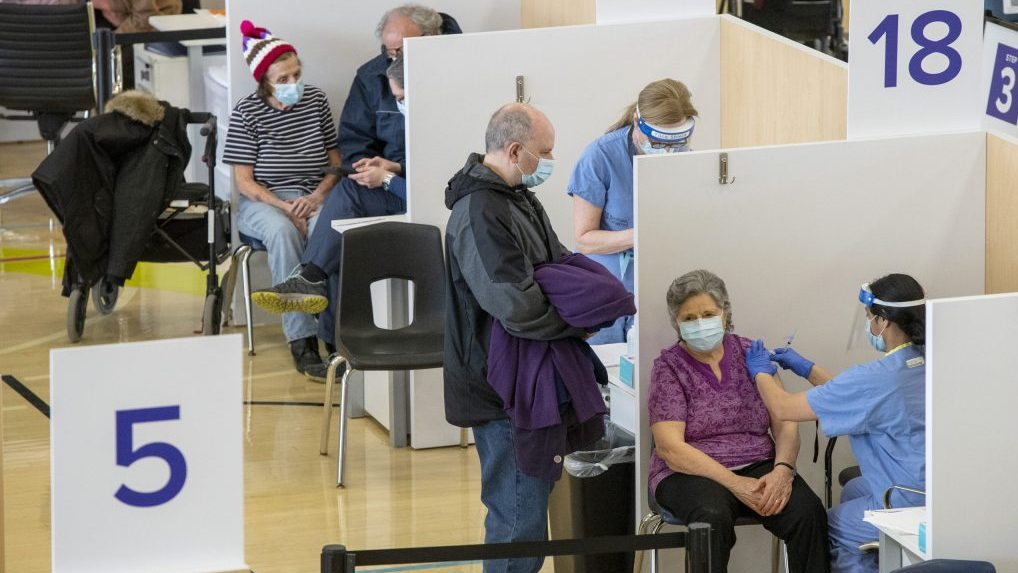
Ontario is set to receive approximately 3.3 million doses of the COVID-19 vaccine in April as essential workers are scheduled to get their vaccinations in mid-May.
The updated Ontario Vaccine Distribution Plan continues with the original plan laid out to vaccinate those above the age of 60, individuals with health conditions, those in high-risk communities and high risk congregate settings in April and May while people who cannot work from home including teachers and retail workers have been moved up approximately two weeks to mid-May.
As of April 7, people over 60 in all public health can begin booking their vaccine appointment.
The provincial government says they have the capacity to vaccinate 150,000 people a day, but say due to vaccine supply, they are targeting 100,000 vaccines per day.
Ontario has so far averaged 72,000 COVID-19 vaccine doses a day. Over 2.6 million doses have been administered with 18.5 per cent of Ontarians receiving at least one dose.
According to the COVID-19 Tracker Canada project, the province has 1.4 million doses that have not been given out.

Experts in the health-care sector have called on the government to prioritize essential workers who cannot work from home, and often cannot self-isolate if they contract the illness, for the shot.
ICU doctors have said many of the patients they’re treating these days are essential workers who got infected in the workplace.
The Ontario Public School Board Association said the perfect time to vaccinate teachers would be over the spring break starting on April 9 and the measure would help keep kids in classrooms, as fewer teachers would have to miss work due to COVID-19 exposure.
The president of the Elementary Teachers’ Federation of Ontario has also said that all schools in hot spot regions should move to online learning until all teachers can be vaccinated.
Premier Doug Ford did say they are working on a plan to get teachers vaccinated with the school boards and Ministry of Health. He said his priority right now is getting the elderly and vulnerable vaccinated, those in hotspot areas and then those who work in essential manufacturing.
The government also released the list of postal codes where additional doses will be allocated due to their status as a hotspot community. People over the age of 50 across of the 13 public health units are being prioritized in those areas.

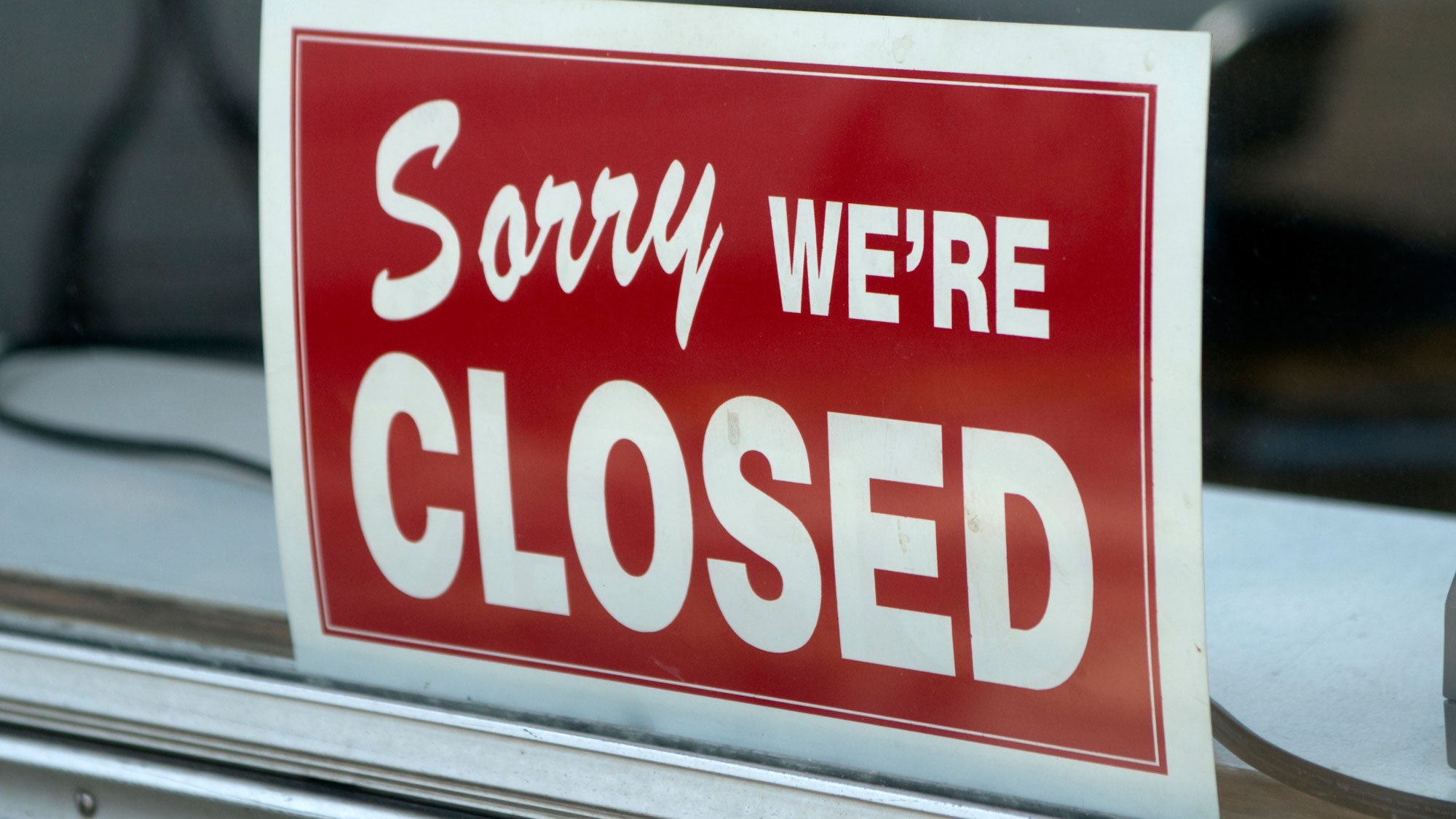
The Ford government will announce a provincewide stay-at-home order, the closure of non-essential retail and new restrictions for big box stores, sources tell 680NEWS.
In an effort to curb rising COVID-19 cases and ICU admissions, non-essential retail stores will be restricted to curbside pickup only according to two sources with knowledge of the situation.
Big-box stores meanwhile will be restricted to essential aisles only — the first time during the pandemic that such a restriction has been imposed.
The reimplementation of a stay-at-home order will be announced, which one source says could be in place for a month. Ontario’s previous stay-at-home order went into effect on Jan. 14 and was lifted nearly two months later on March 8.
The decision comes after medical officers of health in Toronto, Peel and Ottawa called on the government to ramp up public health measures, including a stay-at-home order, saying the recently imposed shutdown does not go far enough to curb the surge of COVID-19 cases in the province.
Dr. Eileen da Villa, Dr. Lawrence Loh and Dr. Vera Etches sent a letter to Dr. David Williams, the province’s top doctor on Tuesday, saying the move was “necessary to prevent and mitigate large scale morbidity and mortality and irreparable strain on the health-care system.”
Earlier Tuesday, Premier Doug Ford warned of increased restrictions in the COVID-19 hotspots of Toronto, Peel and York region. He also expressed frustration at seeing GTA malls, such as Yorkdale, flooded with people this past weekend.
“Going to the malls is not essential,” he said, despite current public health measures permitting them to remain open. “It was absolutely jam-packed and I truly was hoping that people wouldn’t be going in there at the volume that we saw.”
The new restrictions, expected to be announced Wednesday, will likely go into effect in the next 24 to 48 hours.
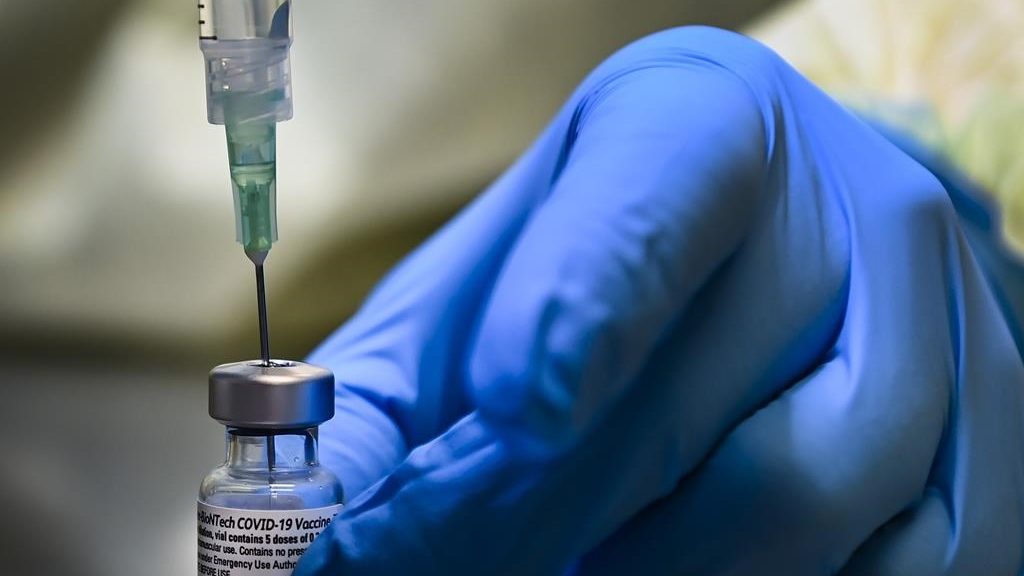
Toronto Mayor John Tory says the city is working on a plan to give people in high-risk workplaces the COVID-19 vaccine at their job site.
WATCH: https://toronto.citynews.ca/2021/04/05/toronto-working-on-plan-to-provide-people-in-high-risk-workplaces-with-the-covid-vaccine/
Tory says the city is currently developing the details of the plan, which will involve mobile vaccination units that are already being used in some hot spot neighbourhoods.
He says the federal and provincial governments should work together to improve the paid sick day program to help workers stay home and self-isolate.
The Ontario government has said that it will not duplicate the paid sick leave program run by the federal government.
But Tory says the rising case counts show that it is time to reconsider that approach.
Toronto’s top doctor says workers need both targeted vaccination clinics and paid sick days as protections against the virus.
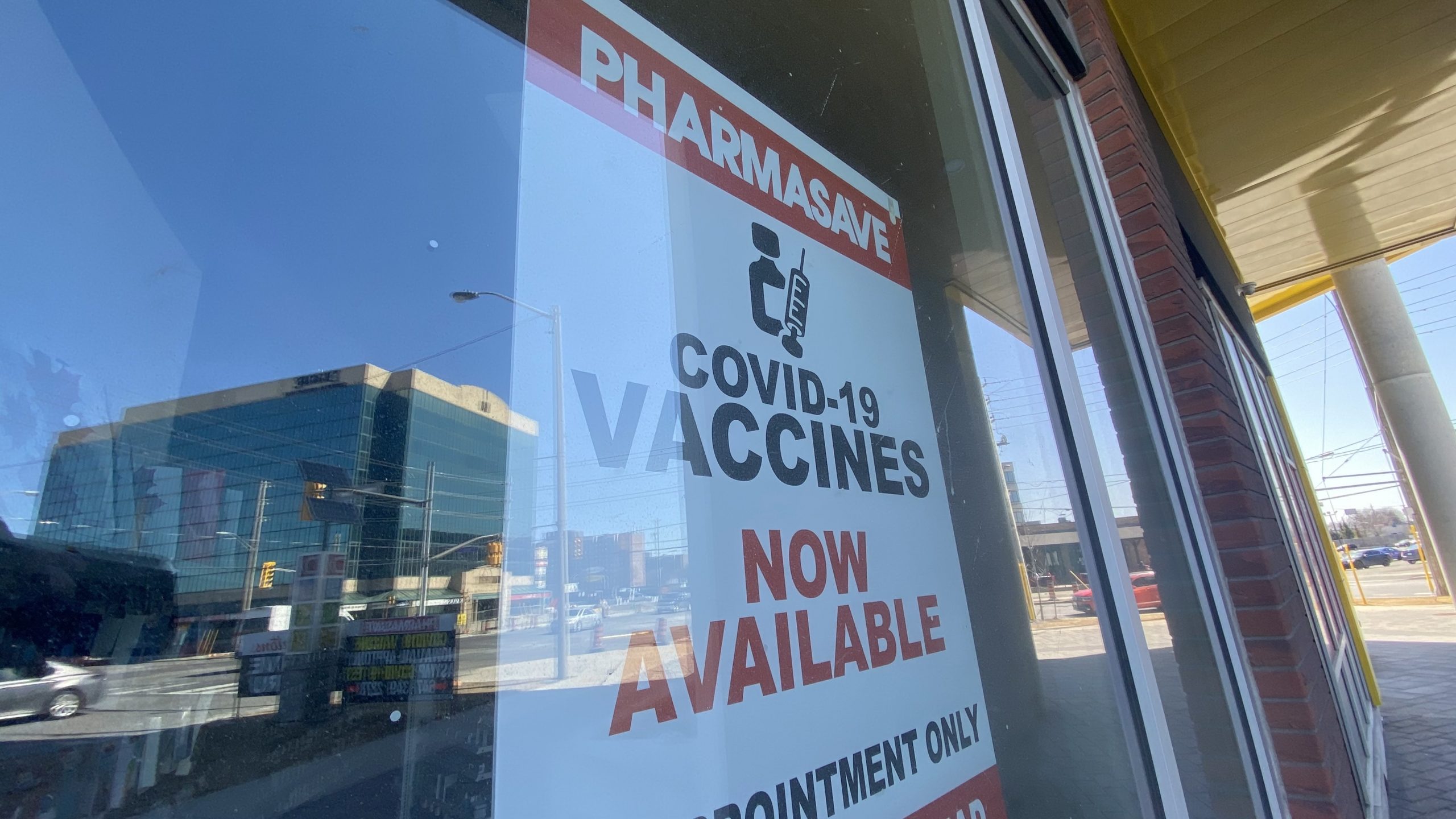
Ontario and Quebec are continuing to report high numbers of new COVID-19 cases, leaving officials in both provinces scrambling to contain the spread of the virus.
Ontario today reported nearly 6,000 new COVID-19 cases over a two-day span, as Toronto Mayor John Tory announced he is working on a plan to vaccinate high-risk workplaces.
But Tory said the province needs to go further by working with the federal government to expand paid sick leave programs to help workers stay home and self-isolate.
Quebec, meanwhile, has added five municipalities south of Quebec City to a list of cities that will have to abide by strict lockdown rules.
Non-essential businesses and many cultural venues must close, schools will move to virtual learning and the overnight curfew will be advanced to 8 p.m. from 9:30 p.m. starting tonight in five parts of the Chaudiere-Appalaches region.
Health Minister Christian Dube says officials are also concerned about the Montreal area and the number of people in hospital, which is putting pressure on fragile intensive care resources.
This report by The Canadian Press was first published April 5, 2021

Three schools boards in Toronto and surrounding areas are closing multiple schools due to COVID-19 outbreaks.
WATCH: https://toronto.citynews.ca/2021/04/05/11-toronto-schools-closing-due-to-covid-19-outbreaks-tdsb/
The Toronto District School Board (TDSB) says 11 schools in Toronto will close and switch to remote learning as of Tuesday, until further notice.
The TDSB says the closures come on the advice of Toronto Public Health.
The affected schools are:
- Charles E Webster PS
- D A Morrison MS
- Danforth Tech CI
- Donwood Park PS
- East York CI
- Ellesmere-Statton PS
- Etienne Brule JS
- Grenoble PS
- Lillian PS
- Riverdale CI
- Valley Park MS
Abu Bakr Education Academy in Scarborough was also advised to close.
These are in addition to six other TDSB schools which were already closed Monday:
- Brian PS
- Victoria Village PS
- Thorncliffe Park PS
- Gateway PS
- Ryerson CS
- Clinton Street JP
The closures come as Peel Region announced Monday that it is closing schools in Mississauga, Brampton and Caledon in an attempt to control the spread of COVID-19.
Toronto Public Health (TPH) released a statement saying it has no current plans to follow Peel’s lead and would “continue to manage risk on a school-by-school basis.”
The Toronto Catholic District School Board (TCDSB) announced it is also closing several schools effective Tuesday, due to COVID-19 investigations.
Initially the board said seven schools were affected and moving to online learning: St. Gregory, James Culnan, Blessed Trinity, St. Brigid, St. Patrick, Neil McNeil and All Saints. Stella Maris, St. Anthony and École élémentaire catholique George-Étienne-Cartier were also added to the list late Monday night.
In addition, the Dufferin-Peel Catholic District School Board (DPCDSB) announced that as of Wednesday, some students will be moving to remote learning due to COVID-19.
The affected schools are St. Andrew, St. Benedict and St. Peter Catholic elementary schools in Orangeville.
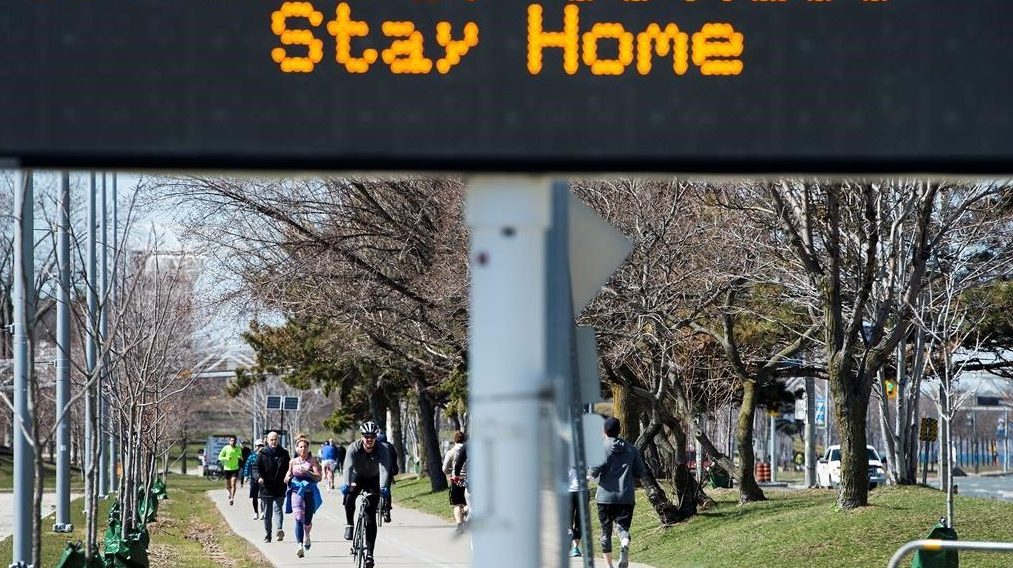
The top doctors of three COVID-19 hot spots in Ontario are urging the province to impose tougher restrictions, including a stay-at-home order, to address a surge in new infections.
The chief medical officers of health for Toronto, Peel Region and Ottawa made the recommendations in a letter to Dr. David Williams, the province’s top doctor.
“A stay-at-home order issued by the province through an Emergency Order is necessary to prevent and mitigate large scale morbidity and mortality and irreparable strain on the health-care system,” said the letter signed by Dr. Eileen da Villa, Dr. Lawrence Loh and Dr. Vera Etches.
The letter comes just days after Premier Doug Ford’s government imposed a provincewide month-long shutdown that critics argue does not go far enough to address more transmissible variants of concern.
The three doctors also appealed to Williams to move schools to online learning in regions with significant COVID-19 outbreaks, remove businesses from the list of essential services, and implement 50 per cent staffing limits for those businesses deemed essential.
They also asked the government to impose travel restrictions between regions within Ontario and for the province to provide paid sick days to supplement the federal program.
The Ontario Medical Association also joined the calls for stricter measures and a stay-at-home order to address the increase in COVID-19 cases.
“The consequences of not doing so could include more people sick and dying than we have experienced thus far; so many so, that doctors could no longer care for everyone,” said Dr. Samantha Hill, the group’s president.

A spokeswoman for Health Minister Christine Elliott said the shutdown was aimed at dealing with the third wave of the pandemic, but noted it takes time for the intended effects of the measures to be realized due to the incubation period of the virus.
But some public health leaders appeared to have lost patience with the province’s approach.
Loh of Peel Region used his powers under Ontario’s public health legislation Monday to order local schools closed for in-person learning.
All schools in Brampton, Caledon and Mississauga will move to remote learning for at least two weeks, starting on Tuesday, Loh said.
“With increasing case counts and the presence of variants of concern, we need to break chains of transmission and keep our schools safe,” Loh said in a statement.
The decision to close schools in the region did not sit well with Brampton Mayor Patrick Brown.
“Don’t close elementary schools. Vaccinate educators,” he tweeted Monday.
Instead of closing schools, Brown suggested closing workplaces like Amazon, food processing plants, big box stores and factories.
“If our supply chain can’t handle it, then vaccinate essential workers. Same old approach isn’t working,” he said.
The president of the Elementary Teachers’ Federation of Ontario said all schools in hot spot regions should move to online learning until all teachers can be vaccinated.
“As medical experts have said, there is no excuse—no valid reason—to not begin vaccinating all essential workers today; this includes all education workers,” Sam Hammond said in a statement.
A spokesperson from Education Minister Stephen Lecce said the province firmly believes that schools should remain open for in-class learning as they are critical for students’ metal health.
Meanwhile, Toronto Mayor John Tory said the city was working on a plan to bring the COVID-19 vaccine to high-risk workplaces using mobile vaccination units.
Tory stressed that the plan was contingent on the availability of vaccine supply in the coming weeks.
“We hope to be able to take it to workplaces … where we know there’s a higher risk just given all the circumstances, and to other areas where we know people are more vulnerable,” Tory said.
Ontario’s vaccine rollout began in December and focused initially on immunizing some of the province’s oldest residents in long-term care and health-care workers.
In recent months, it has shifted in a descending order through the oldest age groups in the province, with Toronto now starting to give the shot to people 60 years and older at its six mass vaccination sites.
But increasingly, experts in the health-care sector say essential workers who cannot work from home and often cannot self-isolate if they contract the illness should be prioritized for the shot.
ICU doctors have said many of the patients they’re treating these days are essential workers who got infected in the workplace.
The province said 494 patients were in intensive care because of COVID-19 and 293 on a ventilator – 44 new patients were admitted in ICUs on Sunday.
Ontario reported nearly 6,000 new COVID-19 cases over a two-day span – 2,938 new cases on Monday and 3,041 cases on Sunday – and 22 deaths.
There were 942 people hospitalized with the virus during the same period, though the Ministry of Health noted that 10 per cent of Ontario’s hospitals do not submit data on weekends.
With files from Denise Paglinawan and Holly McKenzie-Sutter
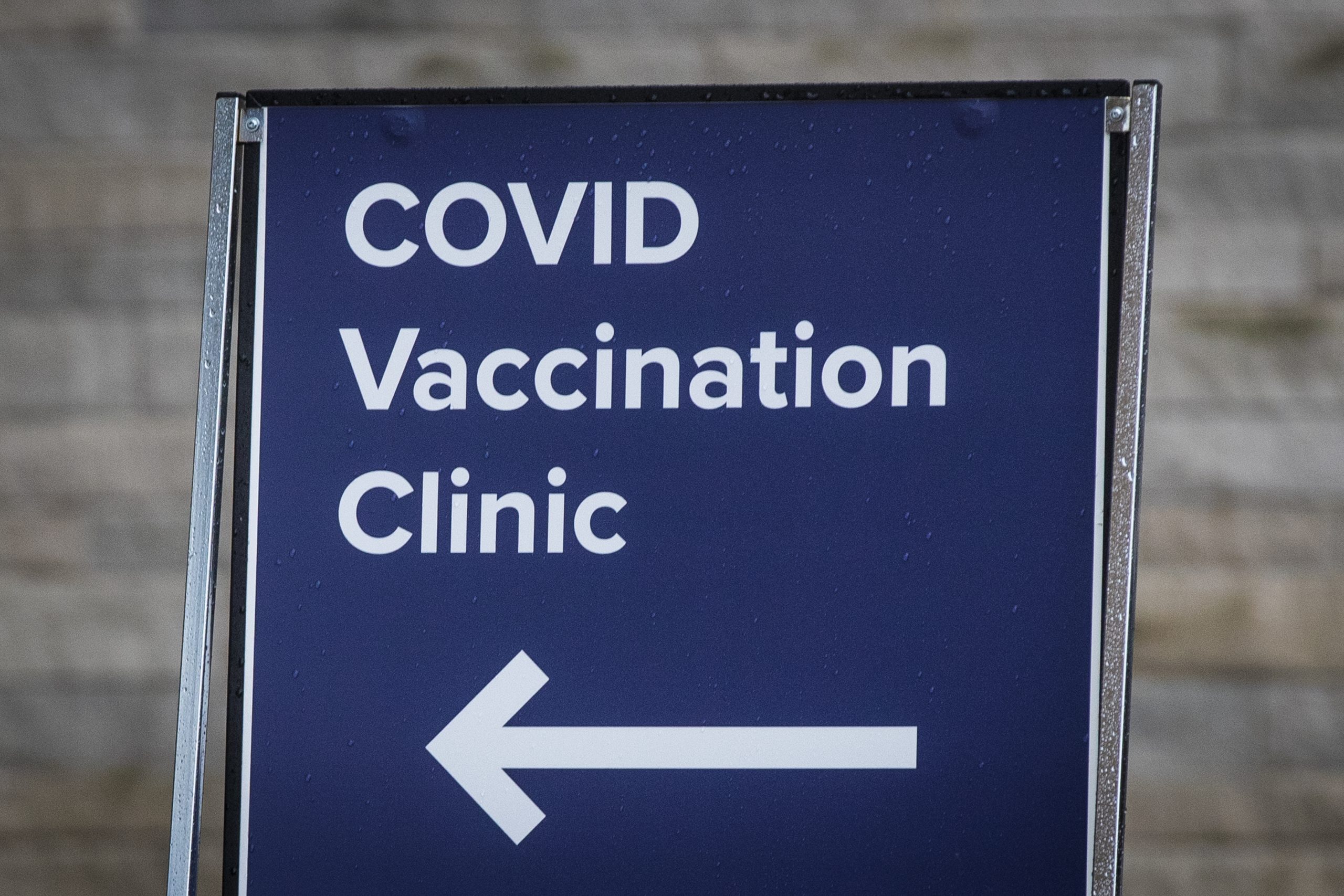
Canada soared past its one millionth diagnosis of COVID-19 on Saturday, reaching the grim milestone the same day it administered its six millionth dose of vaccine to protect against the virus.
British Columbia pushed the nation over the threshold on Saturday afternoon when it reported 2,090 infections over the course of two days, bringing the national number to roughly 1,001,650.
Canada has been recording about 100,000 new cases every three to four weeks, surging past the 900,000 mark on March 13.
The nation had also administered six million doses of vaccine as of Saturday evening, provincial data show. The federal government had set that number as the goal for how many vaccine doses should arrive in Canada by the end of the first quarter of 2021 — a target it met last week.
The two milestones are emblematic of where the nation stands with COVID-19, ramping up its vaccination drive as more contagious variants of the virus fuel the pandemic’s third wave.
Alberta, for instance, is investigating what the province’s chief medical officer of health described as a “significant” outbreak of the P. 1 variant of concern, which first emerged in Brazil.
Dr. Deena Hinshaw said in a tweet that the outbreak can be traced back to a returning traveller.
“Health officials are working hard to limit future spread and reaching out directly to those at risk of exposure,” she said. “AHS will ensure that anyone at risk is isolated, offered testing twice and connected with supports if needed.”
Hinshaw said officials will provide an update on the investigation on Monday.
That province logged an estimated 1,100 new cases of COVID-19 Saturday, roughly half of which are variants of concern.
Hinshaw said 35 per cent of the province’s active COVID-19 cases are due to those variants, which are more contagious and can cause more serious illness.
Some provinces have introduced stricter public health measures in a bid to contain the spread of such variants, with Ontario entering a “shutdown” on Saturday.
The new restrictions force gyms and personal care services across the province to close, but allow essential and non-essential retailers to remain open, with their capacities limited to 50 per cent and 25 per cent respectively.
Schools in the province will also remain open for in-person learning following the delayed spring break, which ends on April 9.
Classrooms were shuttered throughout the province after the winter break in January and gradually reopened based on the local prevalence of COVID-19. The boards in hardest-hit hot spots opened classrooms in mid-February.
But the province has said it doesn’t want to take that step again, calling it disastrous for children’s mental health.
Ontario recorded 3,009 new infections on Saturday and 3,089 a day earlier, when the government didn’t share data because of the Good Friday holiday.
Quebec, meanwhile, has seen daily cases back up over the 1,000 mark in the last few days after weeks of logging new infection rates in the triple digits, recording 1,282 cases on Saturday.
And B.C., whose high numbers tipped Canada over the edge of one million, broke its own record two days in a row, reporting 1,072 diagnoses on Saturday and 1,018 on Friday.
The province’s chief medical officer, Dr. Bonnie Henry, and Health Minister Adrian Dix said people should stay in their own community or health authority while vacationing and consider limiting their travel to day trips or overnight stays in a local campground or hotel.
“We have seen too many cases of people travelling outside their health authority region and not using their layers of protection, leading to outbreaks and clusters in their home community,” they said in a written statement.
“These outbreaks are avoidable, and right now we must stay within our local region for the safety of your community and for others.”
Saskatchewan, meanwhile, counted 280 new cases on Saturday and Manitoba reported 181 over two days.
Farther east, New Brunswick recorded nine new cases and Nova Scotia counted four.
